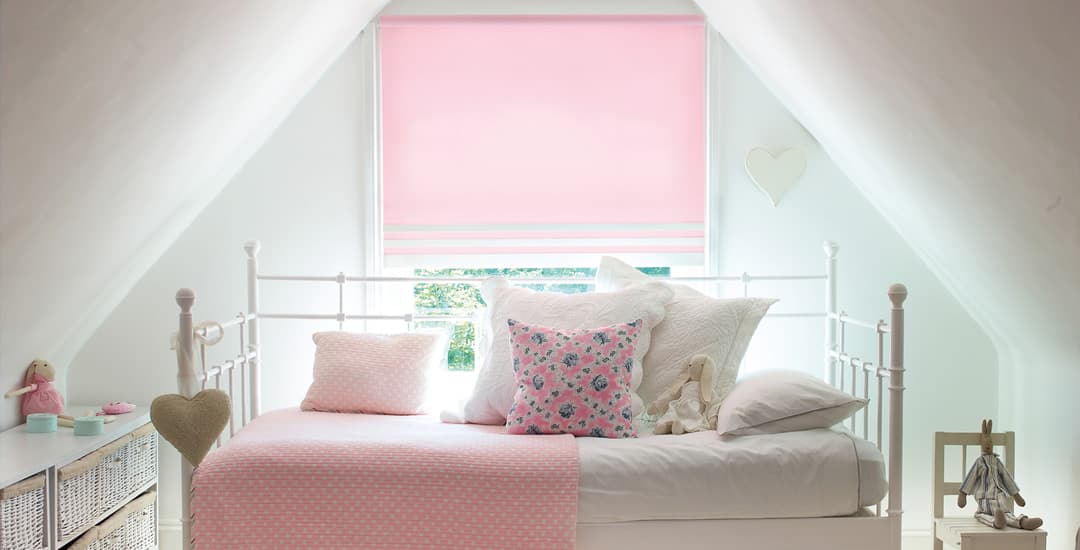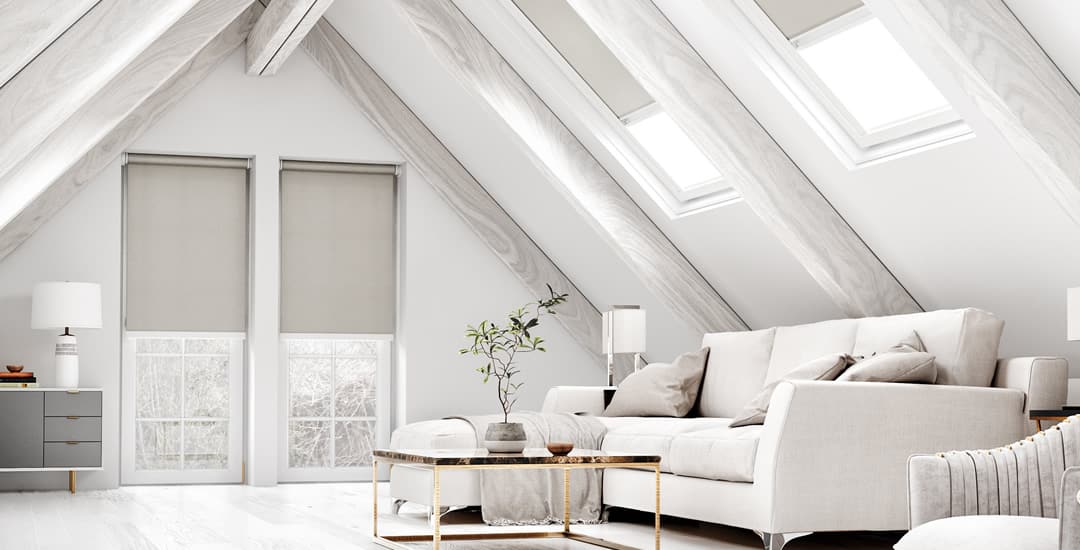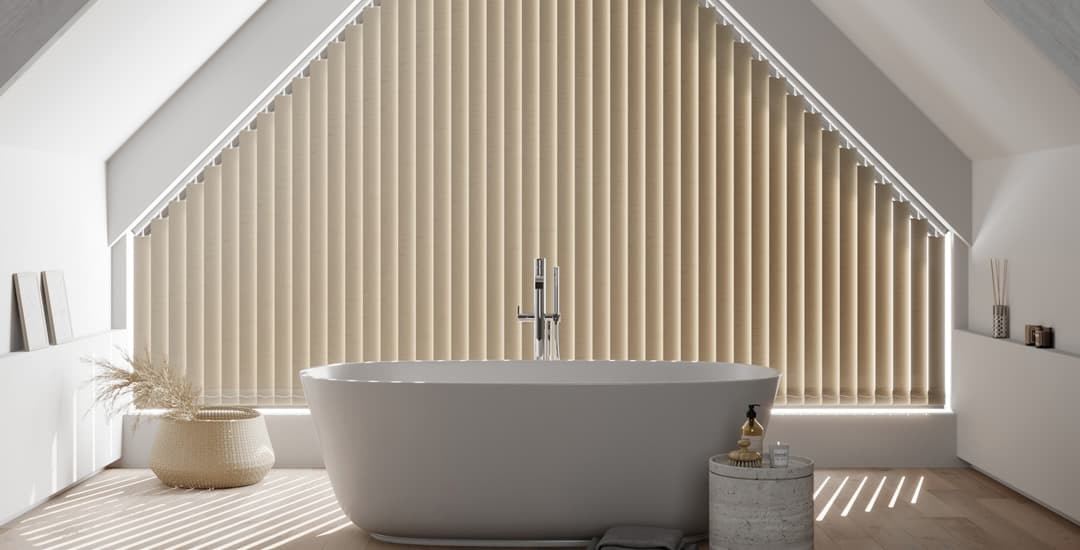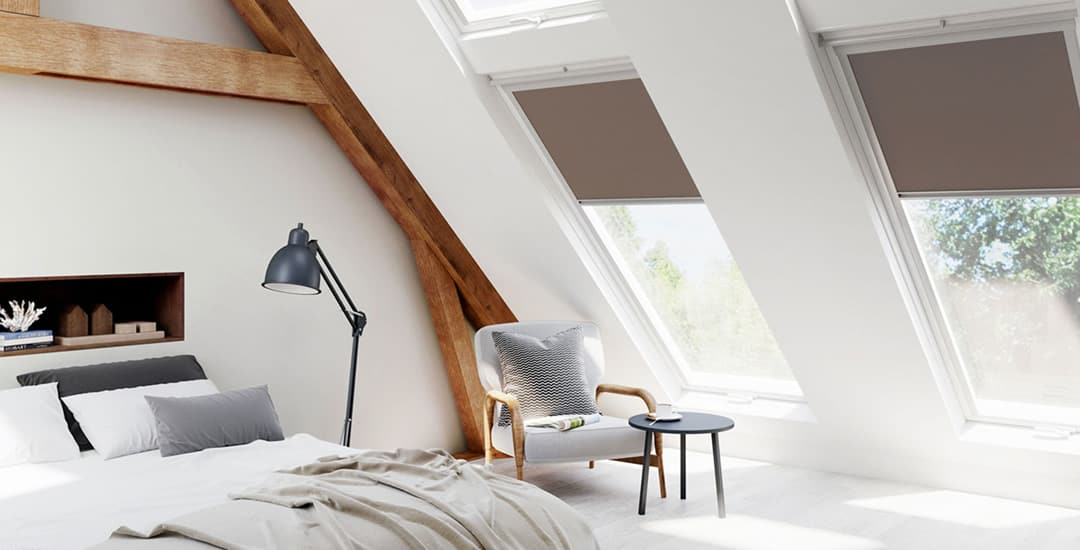
This sort of depends what type of windows you’re dealing with and what you use your attic for, and I’m heavily assuming from the get-go that your attic is a usable room; home to something other than broken furniture, spiders, and for eleven months of the year, the Christmas tree!
So, what blinds are best for attic windows? Blackout blinds may be the best choice if the attic is used as an extra bedroom, although you may have other considerations to factor in if there’s a bathroom up there instead or as well, or if you’ve converted the attic into a standalone mini-apartment to store the visiting in-laws and/or your grumpiest teenager out of the way of the rest of the family.
Whatever your attic situation or plans are, this blog post will tell you what blinds are best for attic windows, and outline the various choices for dormer window blinds.
What blinds are best for attic windows if you have dormer windows?

Dormer windows are often on the small side but aren’t sloped, which means that your key considerations will generally be choosing blinds that aren’t going to swamp a small window, but that on the plus side, won’t need any special tracks or rails to accommodate for a slope.
What you’re using your attic or attic room for is highly relevant here, but you can really just apply the same sort of logic/guidance that you would for choosing blinds for the type of room in question even if it wasn’t in the attic. A broad pointer on this as an example is:
- Choosing between dimout blinds and blackout blinds for attic windows on bedrooms.
- Picking waterproof blinds for attic windows if the space is used as a bathroom or kitchen/kitchenette. This means PVC or vinyl roller blinds or vertical blinds respectively, or faux-wood blinds.
- Considering if you might need blinds to filter or diffuse the light by means of choosing vertical blinds, wooden blinds, faux-wood blinds, or day and night blinds for attic windows.
Other considerations when choosing blinds for attic windows (dormer windows)

Attics tend to be warm spaces as heat rises; and so to keep this heat in during the winter (and also, to reduce the impact of the sun raising the temperature in there during the summer) you might want to consider choosing thermally insulating blinds for dormer windows.
Roman blinds and roller blinds can be made with a special thermally insulating lining or finish, as can vertical blinds. Wooden blinds and faux-wood blinds too are good natural insulators; but Venetian blinds and day and night blinds aren’t so good.
Also, dormer windows tend to be on the small side, which means you should also pay some mind to the ergonomics of how blind and window will work together, for both functional and aesthetic reasons.
If your window is small, a blind that takes up a lot of space over the glass when open is going to reduce the amount of light you get through the window, and so you may want to rule out Roman blinds, wooden blinds, and faux-wood blinds if your window is on the tall side (and so, will have a large amount of blind at the top of it when the blind is open). Roller blinds, day and night blinds, and in shorter lengths, Venetian blinds, all have a small footprint when open.
However, if you have a reasonable amount of clearance over the top of the window, to the point that the fabric or material of the blind will all fit there when the blind is open without occluding the glass at all, this isn’t something you’ll need to worry about so much.
Visually, a small window can look out of proportion or a bit weird if you choose larger slat sizes (like 50mm slats) on slatted blinds; but 25mm or even 35mm slats will tend to look perfectly fine on even the smallest of dormer windows. Vertical blinds, which open to the side, might also look somewhat odd if the window is small or narrow and so, requires a blind that only consists of five or six louvres, but this is all down to personal taste!
What blinds are best for attic windows if the windows are skylights cut into the slope of the roof?

Attics windows that are skylights or sloped along the angle of the roof are almost always made by one of just a handful of brands; most commonly in the UK, Velux, Daksta, RoofLITE, and Fakro.
Generally, attic window blinds for sloped windows are roller blinds or pleated blinds sold in readymade options in the same sizes as the standard windows made by the aforementioned brands, which means that you just need to identify what brand your attic windows are and find the product code that contains the information on the size and model of the window in question.
This will almost certainly be found on a data plate that tends to be located in the top righthand corner of the sash of the window; you can then browse the available options by brand and product code to order the right blind to suit.
Blinds for attic windows within the slope of the roof have tracks or frames that the fabric of the blind runs along, and for this reason, regular vertical up-and-down house blinds aren’t suitable!




